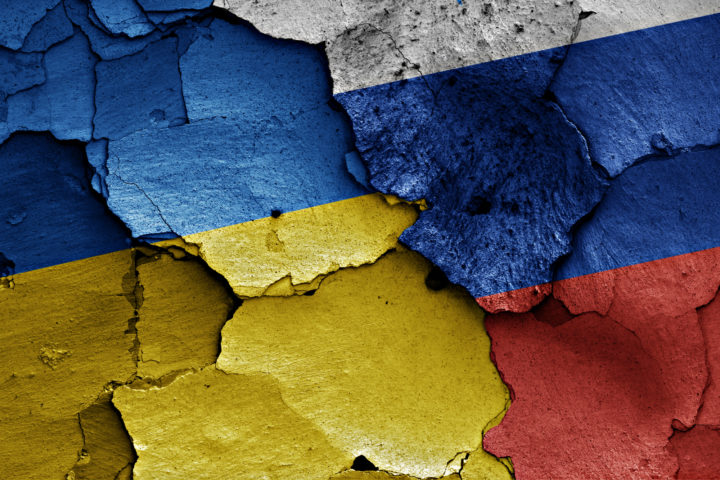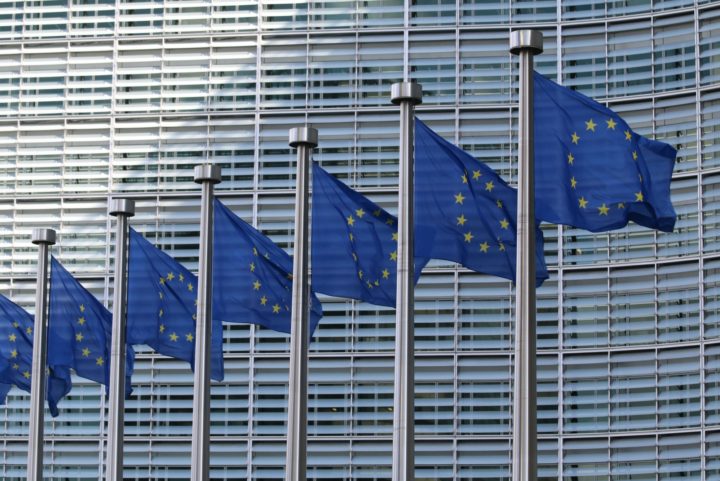Europe should use its Russian energy plans to reinvigorate climate action
For governments that care about climate change and the international world order, the obvious next step is to translate their new clean energy plans into upgraded Paris Agreement targets.

By Richard Black
@_richardblackShare
Last updated:

The ripples of Vladimir Putin’s aggression are travelling far beyond the borders of Ukraine. Impacts include high and volatile energy prices, disruption of supply chains, and worrying prospects for the world’s food supply. Beyond these is the shock to international norms and institutions. Russia, a Permanent Five member of the UN Security Council charged with maintaining international peace and security, was chairing the Council even as its tanks began crushing international peace and security on the Ukrainian border. Just months after endorsing the Reagan-Gorbachev declaration that a ‘nuclear war cannot be won and must never be fought,’ the Putin regime was openly discussing starting one.
Under-cutting Putin
Undermining the Russian war machine by eliminating fossil fuel imports is a central focus of governments opposed to the Putin regime. Something else they need to do to build security against the Putins of this world on an ongoing basis is to bolster the role and legitimacy of the international order, which Russian aggression has so directly challenged.
This includes restoring confidence and momentum in the UN climate negotiations, a process in which Putin’s Russia has invested nothing but cynicism. Success in the UN climate process, given the growing links between climate impacts and conflict, is ultimately essential for global security.
Developed nations' climate responsibility
Under the UN climate convention, European and other developed nations have a formal responsibility to lead decarbonisation. If stopping climate change were not reason enough to deliver sufficiently on that responsibility, a war launched by a major petrostate has produced a strong parallel incentive.
Delivery means rich nations strengthening their own decarbonisation plans and delivering on financial commitments to the Global South to help the poorest nations adopt zero-carbon technologies – which has an obvious security gain, by reducing those countries’ appetite for Russian oil, gas and coal.
There is a simple and obvious step to take.

Stepping up progress
Currently, governments are not doing enough to limit global warming to the Paris Agreement targets. National emission-cutting plans are too shallow, their delivery highly uncertain. A particular characteristic is the headlining of targets for 2050, 2060 or even 2070 with little detail on commitments for decarbonising this decade, which the science shows to be essential.
Now the Russian invasion has spurred many governments, particularly in Europe, to ramp up their decarbonisation plans for this decade. They are not calling it ‘decarbonisation’ – the headline is ‘energy security’ – but in most cases the effect will be the same. Making energy use more efficient, speeding the build-out of renewables and battery storage, accelerating a transition to electric vehicles, mandating and supporting heat pump installation… all of these ideas are being enacted as responses to Russian aggression, but could have been taken from any recent blueprint for climate change mitigation.
True, some governments are also building gas infrastructure; but speeding up the clean energy transition will shorten the working lifetime of any new wells and LNG import terminals.
For governments that profess to care about both climate change and the international world order, the obvious next step is to translate their new clean energy plans into climate targets; specifically, into upgraded Nationally Determined Contributions (NDCs), the formal pledges that countries make to each other via the UN climate convention.
Plans are still being finalised but already we can see some likely impacts on emissions.
REPower EU
The European Commission has just proposed increasing the bloc’s renewable energy target for 2030 from 40% to 45%. The amount of emissions eliminated will depend on the precise mix of fossil fuels that is replaced, but will certainly be a few percent. The Commission also wants to increase the 2030 energy efficiency improvement target too, from 9% to 13% – another few percent, logically, off emissions. Many other measures taken by the EU or its member states should also have an impact on emissions, which can be calculated and captured in a new NDC. The same is true for pledges to accelerate low-carbon progress made by non-EU countries such as the UK.

The EU’s current NDC, published a year ahead of COP26, pledges to cut emissions by 55% (from 1990 levels) by 2030 – a target rated ‘almost sufficient’ by the Climate Action Tracker. Could its energy security plans translate into a new NDC with a headline figure of 60%, or even 65%?
Published ahead of this year’s UN climate summit in Egypt in November, that would set down a strong marker of the EU’s commitment to climate action and the international world order in one fell swoop.
Global action
The Glasgow summit ended with governments calling on each other to ‘revisit and strengthen’ their commitments to 2030: this could start the ball rolling. It would throw down a gauntlet to countries politically allied on the Ukraine crisis, whether in NATO like the US and Canada or outside it like fellow G20 members Japan and Australia. It would challenge them to show they have internalised that when rogue fossil fuelled dictators are the problem, cooperative climate action has to be part of the solution. Meanwhile for the US particularly, contributing its fair share of international climate finance would help the poorest nations decarbonise and build their security, thus acting as both an economic and diplomatic bulwark against Russia.
Just four days after Putin’s tanks rolled across the border, all governments – including, weirdly, his – approved the Working Group Two summary report from the Intergovernmental Panel on Climate Change. In doing so they agreed that ‘…any further delay in concerted anticipatory global action… will miss a brief and rapidly closing window of opportunity to secure a liveable and sustainable future for all.’
Getting through the window before it closes not only means nations decarbonising faster, it entails building confidence between nations that there is genuine cooperative commitment and support for the poorest. NDCs offer the way forward. Undercut Putin’s war machine with clean energy measures, translate them into formal climate change pledges, reinforce the responsible and cooperative world order; the opportunity is there to win the future as well as the present.
This piece was first published in Climate Home Newson 30th May, 2022
Read about the G20 ambition gap in our new report Keeping 1.5°C Alive: The G20+ emissions gap to close this year.
Share